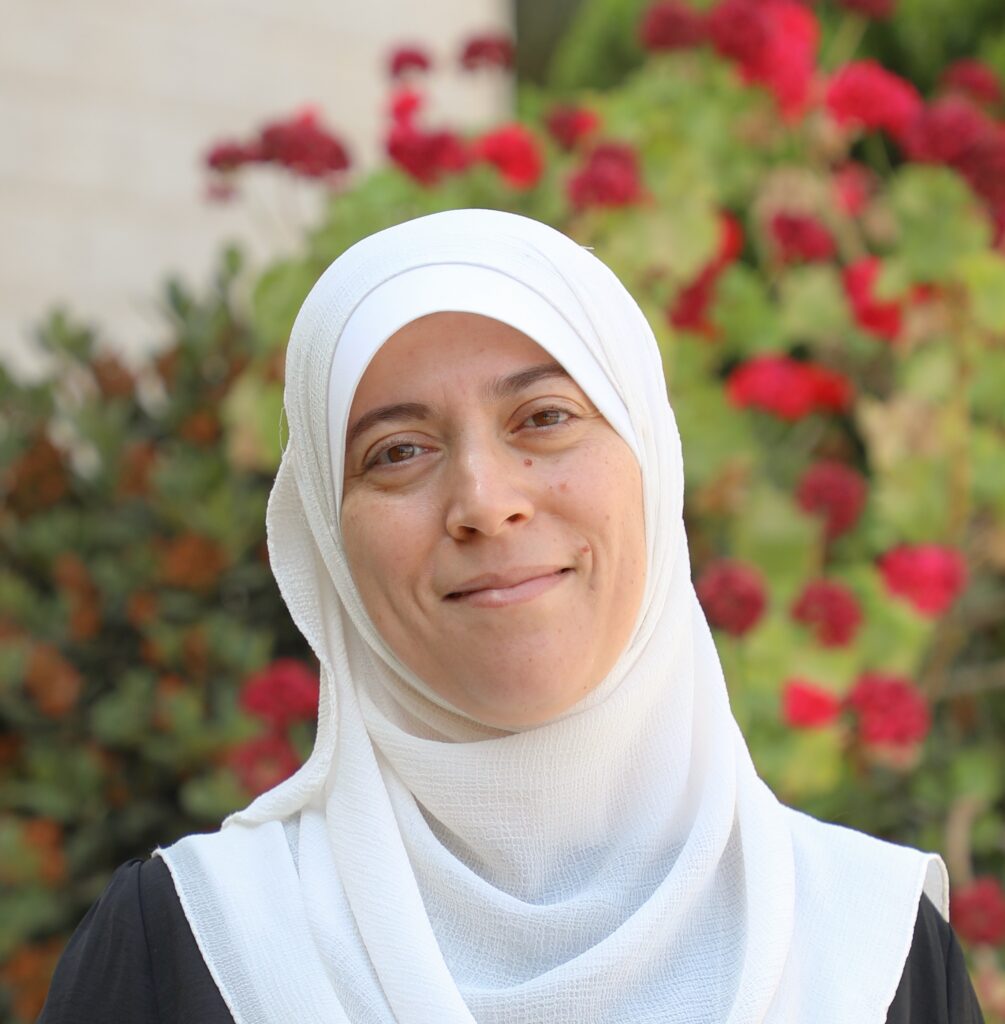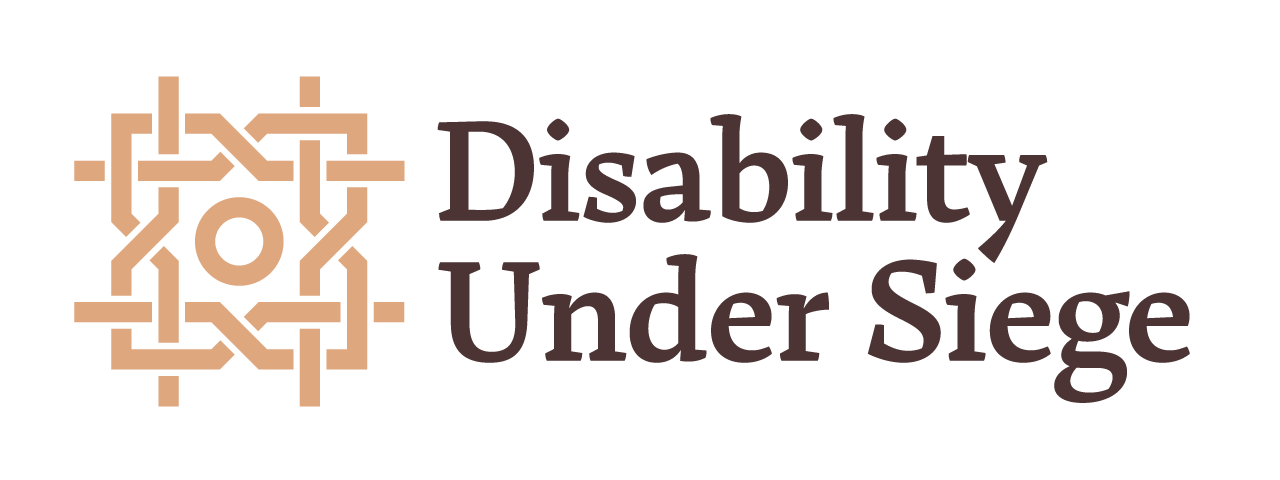
Dr Rula Ghandour is a researcher at the Institute of Community & Public Health (ICPH) at Birzeit University, Palestine. She is currently completing her PhD addressing adolescents’ menstrual health among Palestine Refugee camp dwellers. She worked previously as a research and teaching assistant at the ICPH. The primary aim of Rula’s research is to understand the lived disability experience of Palestinian West Bank adolescent girls aged 15-18 years old, to understand their daily lives at home and in their communities.
1. Understanding the lived disability experience of Palestinian West Bank adolescent girls aged 15 to 18 years old (Early Career Research)
Summary
| This study aimed to understand the lived experience of adolescent girls living in the West Bank of Palestine. This study contributes to the wider aim of DUS network by enhancing the understanding of disability experiences and needs among adolescent girls. It also advocates for evidence-based policy adjustments aimed at improving support for girls with disabilities. To achieve this, we conducted a qualitative study, mainly in-depth interviews that targeted adolescent girls aged 15-18 years old and young adults (19-24 years old) with various types of disabilities, living in different geographical areas and localities of the West Bank. The initial preliminary findings were presented in a workshop attended by a wide range of stakeholders involved in disability work in the West Bank. This workshop provided insights and enhanced the understanding of the study. Under the mentorship of Professor Rita Giacaman, I conducted a thorough thematic analysis of the data on which an academic paper will be based. Furthermore, I implemented a 2-day participatory workshop for adolescent girls with disabilities that is based on the findings of the analysis. The workshop aimed to empower these girls through various interactive activities that are based on expressive art therapies including drama and art. The mentioned 2 workshops in addition to the paper will serve as building blocks for informing policies and better inclusivity of adolescent girls with disabilities. |
Outcomes
Outputs from this project include a comprehensive dataset including interviews and observations which has been coded and analyzed to produce themes and subthemes. Additionally, a working paper has been produced to disseminate the main themes of the analysis, providing insights into the lived experiences of adolescent girls with disabilities, particularly in terms of integration, communication, and identity. Results were presented in an impact workshop conducted in the early phases of the research. Based on the results, 2 participatory workshops were conducted with adolescent girls with disabilities and their caregivers. Furthermore, an abstract has been accepted to be presented at the 5th MENA Conference on Adolescent Health.
Main themes emerged from the analysis:
Theme 1: Diverse Disabilities and Varied Needs
Adolescent girls with disabilities form a diverse group with varying needs depending on their disability type and severity. For example, those with visual impairments may require visual aids and braille materials, while those with hearing impairments may need hearing aids and sign language.
Theme 2: Identity, Inclusion, and Well-being
Identity validation through inclusivity is crucial for these girls, as societal perceptions and stereotypes affect their self-perception, confidence, and psychological well-being.
Theme 3: Communication and Relationships
Communication within families is mostly smooth, but challenges arise with peers and the broader community due to discrimination and bullying. Effective communication is linked to the type of disability.
Theme 4: Coping and Support
Adolescent girls employ various coping strategies, both positive and negative, influenced by the availability of support systems.
Theme 5: Needs
Robust support systems within families and schools are essential. Inclusive education, accessible environments, and societal awareness are key factors in meeting the needs of adolescent girls with disabilities.
During the project, I actively participated in a variety of activities aimed at deepening my understanding of disability and enhancing my ability to provide effective research outcomes. Those included:
In the short term, the project has led to increased awareness and understanding among researchers and hopefully stakeholders regarding the challenges faced by adolescent girls with disabilities. Through the dissemination of findings, there has been a greater recognition of the importance of addressing the unique needs and experiences of this population, leading to initial recommendations for overcoming obstacles related to education and health disparities.
As mentioned above, based on the results of the study, we organized two participatory workshops involving adolescent girls and their caregivers, utilizing expressive art therapies to foster their sense of identity, inclusion, and communication. These workshops proved highly impactful. Additionally, we are currently planning to conduct further interventions aimed at enhancing integration and communication among participants.
We hope that the long-term impact of this research and intervention be reflected in significant policy changes and reforms that can benefit disabled adolescent girls in the West Bank. By addressing the barriers identified in the research, such as those related to education and health, these policy changes can reduce disparities and promote greater inclusion and access to opportunities for adolescent girls with disabilities.
Future plans
| Based on the results, we are planning to build on them and as an initial step, implement an intervention for adolescent girls with disability to foster their integration and communication. The intervention project aims to address the obstacles faced by adolescent girls with disabilities, identified through prior qualitative research. These challenges include issues related to self-esteem, self-acceptance, interactions with others, and experiences of integration or inclusion. By utilizing expressive art therapy and drama, the intervention seeks to foster integration and improve communication among adolescent girls, both with and without disabilities, providing avenues to achieve these objectives. Expressive art therapy involves utilizing creative modalities such as visual art-making, drama, dance/movement, and music to enhance physical, mental, and emotional well-being. This approach accesses imagination and creativity to develop new models of living, contributing to a more integrated sense of self, increased self-awareness, and self-acceptance. By employing expressive art methodologies, the project aims to promote integration, improve communication, and enhance understanding of the needs of adolescent girls with disabilities. The intervention will engage a total of 16 participants, including 8 girls with disabilities and 8 girls without disabilities, ensuring a diverse representation of disabilities and backgrounds. The main objectives of the project are to foster greater integration, enhance communication, and facilitate understanding of the unique needs of adolescent girls with disabilities. The intervention strategy consists of 8 sessions, each lasting around 3 hours, focusing on drama and art activities designed to encourage expression, understanding, and empathy. These activities will be inclusive and accessible, allowing for active participation from all girls. Art and drama tools and methodologies are chosen for their ability to surpass verbal barriers, encourage emotional expression, and promote empathetic connections. The primary outcome of the project will be a detailed report documenting the process, methodologies used, experiences of participants, and outcomes of expressive art techniques on integration and communication. This report will be disseminated to relevant stakeholders, including educational institutions, disability advocacy groups, and policy-makers, to advocate for more inclusive practices in educational and social settings. Engagement and dissemination methods include interactive workshops based on expressive techniques, a detailed monograph documenting the process and outcomes, and the utilization of social media and online platforms to share insights and experiences from the project. Key users and stakeholders for engagement include adolescent girls with and without disabilities, educational institutions, disability organizations, and the Palestinian General Union for People with Disabilities, providing valuable support and resources for the project’s implementation. |
2. Promoting Integration and Communication for Adolescent Girls with Disabilities through Expressive Art Methodologies – an Intervention Study (Early Career Research follow-on funding)
This project aims to enhance integration and communication between adolescent girls with and without disabilities through an intervention using expressive art therapies, including drama and drawing. The intervention will involve 16 adolescent girls: 8 with different types of disabilities and 8 without any disability. We will conduct 6-8 sessions focusing on creative activities designed to foster self-confidence, communication, and integration. The intervention’s effectiveness in improving interpersonal connections and emotional expression will be documented in a comprehensive report. This study intends to provide insights into inclusive practices in educational and social settings, contributing to a broader understanding of disability inclusion and the potential of expressive art therapies in diverse communities.
3. Promoting Evidence-Based Policies for Children and Adolescents with Disabilities in the Occupied Palestinian Territory (Impact Acceleration Funding)
Background
People with disabilities (PWD) in the occupied Palestinian territories (oPt) confront significant challenges, including poverty, high illiteracy rates, and unemployment. Research in the oPt has revealed gaps in services, including limited access to public spaces, employment opportunities, and education and healthcare services, further exacerbated by social stigma and discrimination, especially among children and youth. Additionally, the Palestinian Central Bureau of Statistics Census results from 2017 census, showed that 2.2% of the population over 4 years old, defined by the Washington Group, have disabilities, and there is a lack of data for children aged 2-4. To address these issues and inform policy and practice, additional data on disabilities, especially among children under five, and associated factors are needed.
Research Question
The study seeks to conduct a comprehensive analysis of the child functioning module (CFM) within the Multiple Indicator Cluster Survey (MICS) 2019-2020 data to gain a deeper understanding of the prevalence and distribution of functional difficulties among children and adolescents aged 2-17 in the oPt. The research will also explore factors associated with these difficulties.
Relevance
There is limited research on children with disabilities in low-income, conflict-affected areas like the oPt. The MICS, including specific questions for children aged 2-4, presents an opportunity for an in-depth analysis. This research aims to identify priority groups for policy interventions and ultimately enhance the well-being of children with disabilities in the oPt.
Methodology
The research will utilize UNICEF’s child functioning modules (CFM) using data from the Palestinian Multiple Indicator Cluster Survey (MICS) 2019-2020. Separate analyses will be conducted for children aged 2-4 and those aged 5-17. The study will focus on assessing the prevalence of various types of functioning difficulties and their distribution among different population characteristics in the West Bank and Gaza Strip. The analysis will encompass univariate, bivariate, and multivariate methods.
